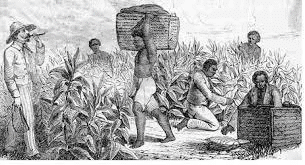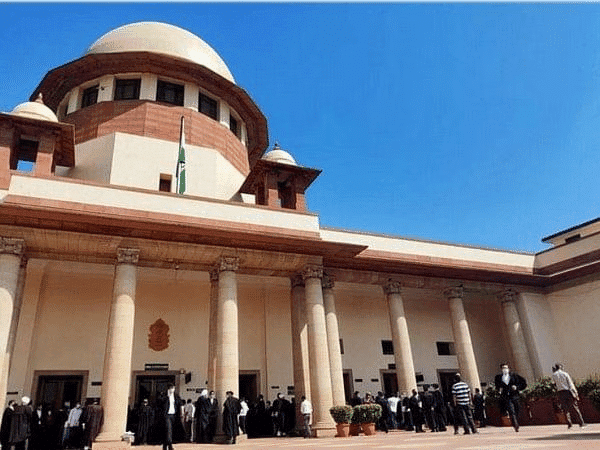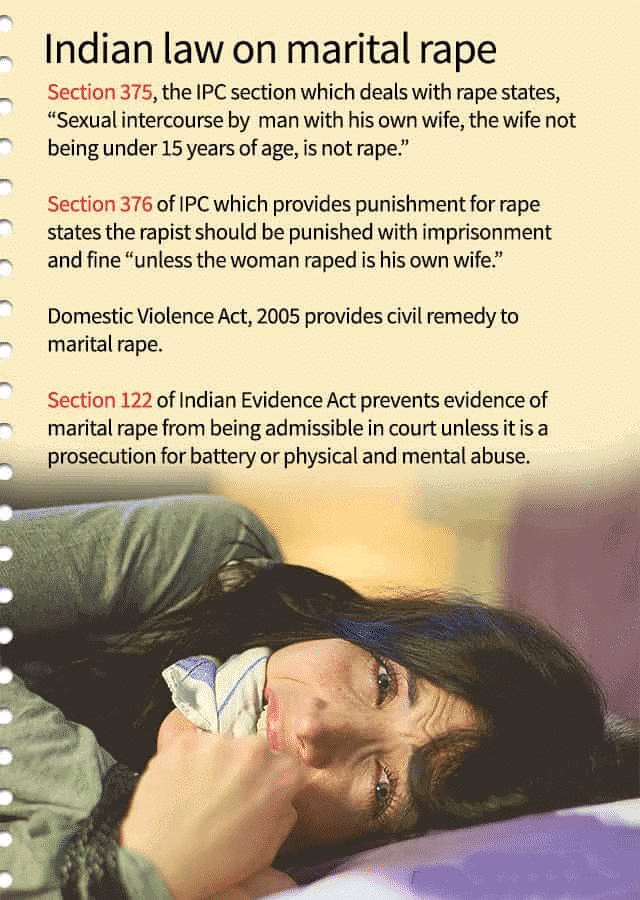Weekly Current Affairs (8th to 14th February 2025) - 2 | General Test Preparation for CUET UG - CUET Commerce PDF Download
Shankari Prasad Case and the First Amendment Act
 Why in News?
Why in News?
- The Shankari Prasad Singh Deo v. Union of India, 1951 case was pivotal in Indian constitutional law as it challenged the First Amendment Act, 1951, which restricted the Right to Property.
Key Takeaways
- The First Amendment Act aimed to protect land reform laws from judicial review.
- The Supreme Court upheld the First Amendment, distinguishing between ordinary laws and constitutional amendments.
- The decision removed legal barriers to land reforms, facilitating zamindari abolition.
Additional Details
- First Amendment Act, 1951: Introduced key provisions that included the Ninth Schedule, which listed laws immune from judicial review, especially concerning land reforms.
- Protection of Land Reforms: Articles 31A and 31B were added to shield land reform laws from being struck down due to violations of fundamental rights.
- The amendment restricted free speech under Article 19 and enhanced caste-based reservations.
- The need for this amendment stemmed from the post-independence goal of redistributing land from large landowners (zamindars) to peasants.
The Shankari Prasad Singh Deo v. Union of India case arose when Sankari Prasad Singh Deo, a zamindar, contested the First Amendment, which allowed the government to acquire land from zamindars without compensation, conflicting with the original fundamental rights.
The Supreme Court's ruling established that constitutional amendments could alter fundamental rights, which led to significant implications for land reforms in India. Subsequent cases like Sajjan Singh v. State of Rajasthan, 1964 and I.C. Golaknath v. State of Punjab, 1967 further evolved the legal stance on fundamental rights and amendments.
In conclusion, the 44th Amendment Act of 1978 redefined the Right to Property from a fundamental right to a legal right under Article 300A, ensuring that no one could be deprived of their property without lawful authority. This evolution reflects India's shift towards a more socialist economy, emphasizing land reforms and social justice.
Rising Online Child Abuse
 Why in News?
Why in News?
- A recent study published in The Lancet has raised alarming concerns about the increasing incidence of online sexual abuse affecting children globally. This study analyzed data from 123 different studies across various regions, highlighting a pressing issue that requires immediate attention.
Key Takeaways
- Approximately 8.3% of children worldwide, or one in twelve, have experienced online sexual abuse in the last decade.
- The study identifies various forms of online sexual exploitation, including online solicitation (12.5%), non-consensual image sharing (12.6%), online sexual exploitation (4.7%), and sexual extortion (3.5%).
- Gender dynamics reveal no significant difference in abuse rates between boys and girls, indicating increasing risks for boys.
- There are severe mental and physical health repercussions for victims, including lower life expectancy and diminished employment opportunities.
Additional Details
- Increased Internet Access: The widespread availability of the internet has greatly expanded children's online presence, with one-third of all internet users being children. This increase has made them susceptible to exploitation, particularly in unsupervised environments like social media and gaming platforms.
- Pandemic-Related Factors: The Covid-19 pandemic led to a marked increase in online activity, which offenders exploited, resulting in a threefold rise in sextortion cases since March 2020.
- Advancements in Technology: The proliferation of artificial intelligence tools and digital platforms has facilitated the creation and distribution of child sexual abuse material (CSAM), making it more challenging to detect and trace.
- Lack of Digital Literacy: Insufficient awareness about online safety renders users vulnerable, with only 38% of Indian households possessing digital literacy.
- Inadequate Monitoring and Enforcement: Law enforcement and tech companies struggle to keep pace with rapidly evolving online platforms, resulting in monitoring and enforcement gaps.
To combat the rising trend of online child abuse, several measures should be implemented:
- Strong Legislation and Enforcement: Establish stricter legal frameworks and enhance penalties for offenders.
- International Cooperation: Foster collaboration with agencies like INTERPOL and the FBI to dismantle cross-border abuse networks.
- Robust Reporting Systems: Develop real-time reporting and monitoring tools for social media platforms, including confidential helplines.
- Public Awareness and Education: Increase digital literacy and promote online safety through targeted awareness campaigns aimed at children, parents, and educators.
- Collaboration with the Tech Industry: Encourage tech companies to implement stricter content moderation, better age verification, and ethical AI tools to prevent CSAM creation on dark web platforms.
- Need for Further Research: Invest in comprehensive research and data collection, especially in underrepresented regions, to inform evidence-based policies that strengthen child protection frameworks.
In conclusion, addressing the crisis of online child abuse requires a multi-faceted approach involving legislation, technology, education, and international cooperation to protect vulnerable children from exploitation.
SC Plea for Lifetime Ban on Convicted Politicians
 Why in News?
Why in News?
- The Supreme Court (SC) is currently considering petitions that advocate for a lifetime ban on individuals convicted of crimes, preventing them from contesting elections. This move aims to decriminalize politics in India.
Key Takeaways
- The petitions seek amendments to the Representation of the People Act, 1951 (RP Act, 1951), which outlines legal provisions regarding the eligibility of convicted individuals to contest elections.
- Current legal provisions disqualify individuals based on the duration of their sentences and the nature of their offenses.
Additional Details
Legal Provisions:
- Section 8(3): Disqualifies individuals sentenced to two years or more from contesting elections during imprisonment and for six years post-release.
- Section 8(1): Leads to immediate disqualification for serious offenses—such as rape, terrorism, and corruption—regardless of sentence duration.
- Section 11: Empowers the Election Commission (EC) to adjust the disqualification period, as seen in the controversial case of Prem Singh Tamang.
SC Judgements:
- Association for Democratic Reforms (ADR) Case, 2002: Required candidates to disclose criminal records.
- CEC vs. Jan Chaukidar Case, 2013: Confirmed that jailed individuals lose electoral rights, though this was later amended by Parliament allowing undertrial prisoners to contest.
- Lily Thomas Case, 2013: Struck down provisions allowing convicted legislators to remain in office while appealing their convictions.
- Public Interest Foundation Case, 2018: Mandated political parties to publish candidates' criminal records transparently.
Arguments For and Against a Lifetime Ban on Convicted Politicians
Arguments Against:
- The Vohra Committee (1993) suggested background checks rather than a blanket ban.
- There is a risk of political rivals misusing the legal system to disqualify opponents.
- Politicians are directly accountable to voters and differ fundamentally from government employees.
- Imposing a lifetime ban ignores the potential for individual reform.
Way Forward
- Strengthening Disqualification Criteria: Extend disqualification for serious crimes beyond six years.
- Empowering Election Commission: Enhance the EC's authority to verify candidates’ criminal histories and financial disclosures.
- Judicial Reforms: Implement fast-track trials for MPs/MLAs to ensure timely justice.
- Enforcing a Code of Conduct: Create a mandatory code to ensure ethical behavior among politicians, monitored by a Political Ethics Committee.
The role of the Supreme Court in regulating the criminalization of politics is crucial, particularly concerning the disqualification of convicted politicians. The ongoing discussions and potential amendments to the RP Act could significantly influence the integrity of India's political landscape.
Changing Nature of Terrorism
Why in News?
- New methods of terrorism and terror attacks are evolving, significantly influenced by geopolitical instability, digital radicalization, and the changing strategies of extremist groups.
Key Takeaways
- Terrorism trends are increasingly unpredictable, with dormant groups like Hamas resurfacing.
- State-sponsored terrorism is on the rise, particularly in regions controlled by groups like HTS and the Taliban.
- Modern tactics include unconventional attacks and the involvement of educated professionals in extremist networks.
- Technology plays a crucial role in enhancing the capabilities of terrorist organizations.
- Domestic terrorism is escalating due to political polarization and immigration tensions in the West.
Additional Details
- Unpredictability: Terrorism trends have become less predictable, illustrated by Hamas's attack on Israel in October 2023, which contradicted previous assumptions about terror groups avoiding full-scale warfare.
- State Sponsored: Countries like Syria and Afghanistan are now governed by terrorist factions, which prolong the threat of terrorism.
- Evolving Tactics: Modern terrorism relies on a network of sympathizers and sleeper cells, with tactics such as vehicle ramming being employed. An example includes the New Orleans attacks in 2025.
- Technology as a Force Multiplier: Advanced technologies like drones and cyber tools are increasingly utilized by terrorists, exemplified by the Houthi attack on Saudi Aramco's facilities in 2019.
- Cross-Group Cooperation: Terrorist organizations are collaborating to enhance their influence, such as Iran’s Axis of Resistance, which includes Hezbollah and Hamas working against Israel.
The changing landscape of terrorism highlights the need for a robust response to the evolving threats, particularly as global governance structures prove ineffective in countering these challenges.
Reasons for the Changing Nature of Terrorism
- Weakened Global Governance: Ineffective institutions like the United Nations Security Council (UNSC) and International Court of Justice (ICJ) hinder efforts to dismantle terror groups and prevent their funding.
- Emergence of Terror Regime: The collapse of regimes, such as the Assad regime in Syria, has led to a strengthening of terrorist infrastructures.
- Global Terrorist Networks: Increased globalization facilitates the movement of people, money, and arms, enabling groups like Al-Qaeda and ISIS to operate beyond the Middle East.
- Shift in Ideological Motivations: Modern terrorism is driven by a combination of religious extremism, personal grievances, and identity issues, as seen in the Christchurch shootings in 2019.
- Proxy Warfare: State-sponsored terrorist groups contribute to instability in rival nations, exemplified by Jaish-e-Mohammed's activities in India, supported by Pakistan.
Impact on India
- Homegrown Radicalization: Indian youth, particularly from states like Kerala and Tamil Nadu, are increasingly being recruited into terror organizations, with significant numbers linked to ISIS.
- Low-Cost Attacks: There is a rise in low-cost, high-impact attacks, such as the Coimbatore car blast in 2022.
- Radicalization in Local Dialects: Terrorists exploit social media and encrypted applications for recruitment and planning, while deepfake technology poses misinformation threats.
- UAV-Based Terrorism: Drones are now used for carrying arms and explosives across borders, with incidents like the drone attack on the Indian Air Force station at Jammu in 2021.
- Hawala Transactions: There's an increased use of hawala networks, cryptocurrency transactions, and fraudulent NGOs for funding terrorism.
Way Forward
- Global Cooperation: Strengthen international counterterrorism frameworks to curb terrorist financing and transnational networks.
- AI & Cybersecurity Measures: Develop AI-driven tools to counter online radicalization and misinformation.
- NGO Scrutiny: Monitor NGOs receiving foreign funds to prevent terror financing disguised as charity.
- Counterterrorism Laws: Update laws like UAPA and NIA Acts to address new-age threats including lone-wolf attacks.
The global landscape of terrorism is evolving, necessitating comprehensive strategies to counter these emerging threats effectively.
Marital Rape in India

Why in News?
The recent ruling in the Gorakhnath Sharma vs State of Chhattisgarh Case, 2019 by the High Court (HC) has sparked significant discussions on marital rape in India. The HC stated that a husband cannot be charged with rape or unnatural sex with his wife if she is above 15 years of age, despite issues of consent. This decision was based on Exception 2 under Section 375 of the Indian Penal Code (IPC), which currently exempts husbands from rape charges if their wives are not below the age of 15. Concurrently, the Supreme Court (SC) is hearing petitions aimed at criminalizing marital rape, with support from women's rights activists.
Key Takeaways
- Marital rape is not recognized as a crime in India.
- The legal stance allows husbands immunity under certain conditions.
- Current legal debates are pushing for reforms to address marital rape more comprehensively.
Additional Details
- What is Marital Rape? Marital rape is a form of intimate partner violence that involves forced sex or sexual assault between spouses. While it is not a crime in India under certain conditions, if the couple is married but living separately, a husband can be charged with rape if his wife does not consent to sexual intercourse.
- Legal Stance: Under Section 375(2) of the IPC, sexual acts between a man and his wife who is not under 15 years of age are not classified as rape. However, the age of consent was raised to 18 years following the Independent Thought vs UoI Case, 2017, which deemed the previous exemption arbitrary and unconstitutional.
The issue of marital rape in India presents a complex intersection of legal, social, and cultural factors. While several judicial rulings have emphasized the significance of consent and the dignity of women, legislative action remains limited. The need for legal clarity and reform is paramount to protect individual rights while addressing societal concerns.
Evolving Warfare and Need for India's Defence Transformation
 Why in News?
Why in News?
- At Aero India 2025, Chief of Defence Staff (CDS) General Anil Chauhan highlighted the necessity for the Indian Army to evolve in response to emerging warfare trends. He stressed that a holistic transformation is essential, extending beyond just technological advancements.
Key Takeaways
- Warfare is becoming multi-dimensional, encompassing land, sea, air, cyberspace, and outer space.
- India faces evolving security challenges, including threats from Pakistan and China.
- A holistic transformation is crucial for modernizing India's defence capabilities.
Additional Details
- Evolving Warfare: Modern conflicts are characterized by multi-dimensional engagements, including non-contact warfare which utilizes precision-guided munitions, cyberattacks, and electronic warfare, reducing the need for direct combat.
- Technological Advancements: Nations like the US, China, and Russia lead in developing technologies such as quantum computing, artificial intelligence, and hypersonic weapons, which may redefine combat scenarios.
- India's Strategic Challenges: India deals with a two-front threat from Pakistan and China, necessitating enhanced maritime capabilities and proactive defence strategies.
- Modernization Needs: India's defence inventory suffers from outdated equipment, with legacy systems still in use, highlighting the need for rapid modernization and indigenous production.
- Budgetary Constraints: The defence budget is significantly lower than that of China, leading to challenges in balancing operational needs with financial limitations.
In conclusion, India's defence transformation requires a comprehensive approach that integrates advanced technology with strategic adaptability. By aligning with modern warfare trends, India can enhance its global defence capabilities and ensure national security.
|
164 videos|626 docs|1131 tests
|
FAQs on Weekly Current Affairs (8th to 14th February 2025) - 2 - General Test Preparation for CUET UG - CUET Commerce
| 1. What was the significance of the Shankari Prasad case in relation to the First Amendment Act? |  |
| 2. How is rising online child abuse being addressed in India? |  |
| 3. What are the implications of the Supreme Court plea for a lifetime ban on convicted politicians? |  |
| 4. How is the nature of terrorism changing in the modern world? |  |
| 5. What is the current legal status of marital rape in India? |  |
















